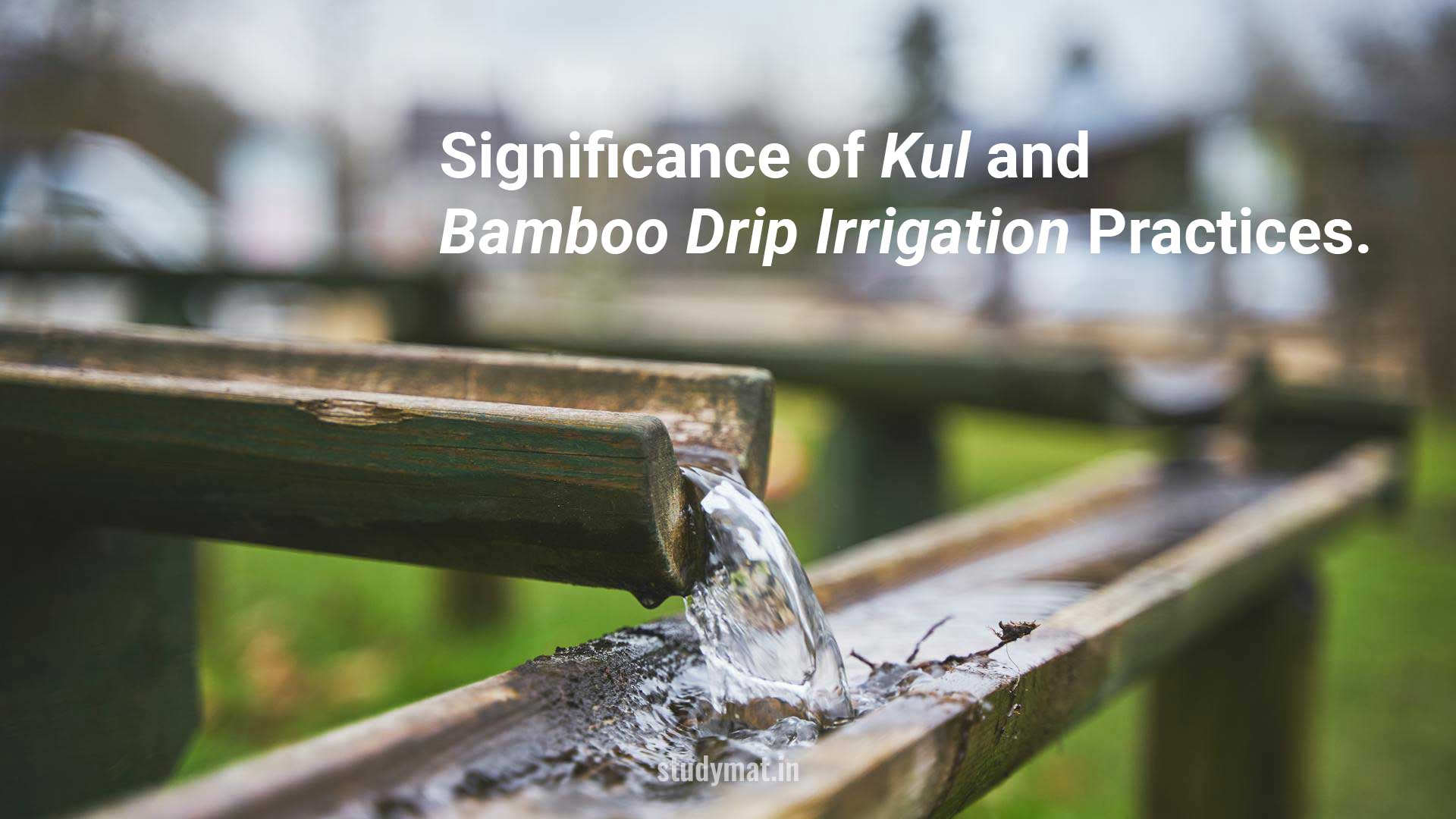In this article, we will Explain the Significance of Kul and Bamboo Drip Irrigation Practices.
Kul and Bamboo Drip Irrigation practices are important for farming in areas where water is scarce or unevenly distributed.
Significance of Kul and Bamboo Drip Irrigation Practices.
Kul Irrigation:
Kul is a traditional system of irrigation used in the mountainous regions of India. It involves diverting water from natural springs or streams into small channels or trenches, which then distribute the water to fields. This method helps farmers grow crops even in hilly terrain where other irrigation systems may not be feasible. Kul Irrigation is sustainable and helps conserve water while supporting agriculture in challenging environments.
In a cold desert area like Spiti in Himachal Pradesh and Jammu, Kul Irrigation has been practiced since ancient times. Kuls are diversion channels made to carry water from glaciers to villages. The kuls often span long distances, some being 10 km long and running down precipitous mountain slopes.
Read Also:
Explain an Indirect Use Value of Biodiversity.
“Species Diversity is the most visible component of Biodiversity.” Explain.
Differentiate between Food Chain and Food Web.
Bamboo Drip Irrigation:
Bamboo Drip Irrigation is another traditional irrigation technique used in regions with limited water availability. It involves using bamboo pipes with small holes to slowly drip water onto the soil near the plant roots. This method ensures that water is delivered directly to the plants where it is needed, minimizing waste and maximizing efficiency. Bamboo Drip Irrigation is simple, low-cost, and suitable for small-scale farming, making it a valuable practice for improving crop yields in arid or semi-arid areas.
In the North-eastern Hills like in Meghalaya, bamboo drip irrigation is practiced to conserve water.
Overall, both Kul and Bamboo Drip Irrigation practices are significant because they enable farmers to grow crops in water-scarce regions, promote water conservation, and support sustainable agriculture.
Related Search:
FAQ:
- Why is bamboo drip irrigation important?
- What is bamboo drip irrigation system?
- Which state practices bamboo drip irrigation?
- Write a short note on bamboo drip irrigation system.
- Explain the significance of kul and bamboo drip irrigation practices.
- What are the methods of irrigation?
- Explain the significance of kul irrigation practices.
- Explain bamboo drip irrigation system.
- Where bamboo drip irrigation system is more prevalent in india?
Follow us:
If you like this article, you can Follow us on Facebook.
Also, you can Join our Official Facebook Group for QnA Sessions and Discussions with the worldwide IGNOU community.

